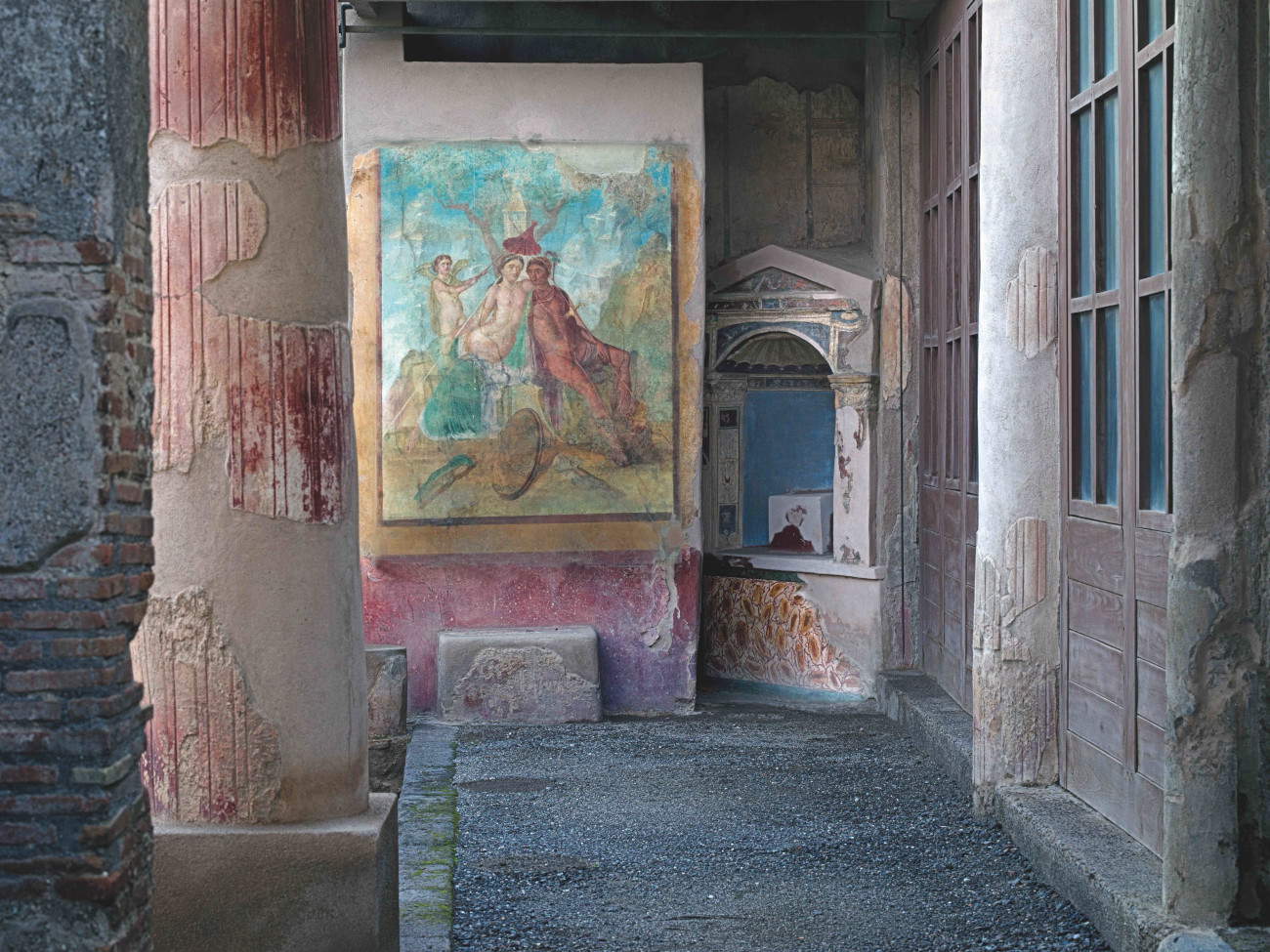From April 23 to June 16, 2024, Castel Sant’Angelo in Rome hosts the exhibition Interno Pompeiano by Luigi Spina (Santa Maria Capua Vetere, 1966). While the Archaeological Park of Pompeii was closed to the public for pandermia, the photographer captured the interiors of more than one hundred and twenty domus in Pompeii, producing a body of more than 1450 shots: this is the starting point for the Roman exhibition, organized by the Rome State Museums Directorate in collaboration with the General Directorate for Museums and the Archaeological Park of Pompeii, following up on 5 Continents Editions’ Interno Pompeiano publishing project, a book of nearly three hundred large-format color photographs, with essays by Massimo Osanna, Gabriel Zuchtriegel, Carlo Rescigno and Giuseppe Scarpati, in addition to Spina himself.
On display in the exhibition are sixty large-format color photographs from that body of photographs, printed on fine art paper, to tell the story of the special situation that allowed Spina to “inhabit” Pompeii and “live” in its homes and to capture the nuances in the multiple environments of his shots. Using a Hasselblad H6D-100c camera with optics, without the aid of any artificial light, immersed in a deserted and silent Pompeii, Spina captured views that lead from the interior to nature and vice versa: the photographer’s research lingers on plastered columns, unusual views and perspectives that include the surrounding landscape. Looking closely at mosaics, walking through peristyles, rediscovering every detail of wall paintings, Spina has selected sixty interiors: photographs where domus re-emerge in an unprecedented vision, in an environmental balance that restores the dimension of human presence on the one hand, and the vastness of the Roman Empire on the other, evoking at the same time the ancient tragedy of Pompeii. In his shots, houses come to life again, such as the House of Marcus Lucretius on Via Stabiana, the House of the Tragic Poet with the famous “cave canem” mosaic, and the House of Orion with the multifaceted mosaic from which it takes its name and narrates its myth, in their hues of sinopsis red, soft yellow, delicate green and dusty blue; the mosaic floors, with decorative motifs and precious stones, stand out next to the wall paintings from the heavenly landscapes and scenes of daily life.
The goal of the Castel Sant’Angelo exhibition is to present the public with a new visual aesthetic of the Roman city and its monuments, following the path of light and the passage of time.
“Pompeii has been told, depicted, narrated millions of times, yet it always continues to offer new angles and points of view,” said Museums General Director Massimo Osanna. “This exhibition, in particular, is an example of how, through the use of photography, it is possible to portray Pompeii’s domus in an unprecedented way, creating an atmosphere of magic and rare suggestion. This is an exhibition of great impact, which will go, in the coming months, to implement and enrich the cultural offer of another extraordinary site, such as Castel Sant’Angelo. As the General Directorate for Museums,” Osanna concludes, “we have already taken steps, moreover, so that the Castle will become the inaugural stage of a broader itinerary, which will bring the magic of Pompeii, read through Spina’s lens, to other cultural sites in our country.”
The Interno Pompeiano publishing project by 5 Continents Editions, promoted by the Archaeological Park of Pompeii, produced in Italian and French editions (with essays by Massimo Osanna, Gabriel Zuchtriegel, Carlo Rescigno, Giuseppe Scarpati and Luigi Spina) counts several international co-editions: for the English market with Thames&Hudson, for the American market with Getty Museum, for German-speaking countries with Elisabeth Sandmann Verlag and for Spain with La Fábrica.
For info: http://castelsantangelo.beniculturali.it/
Hours: Tuesday through Sunday, 9 a.m. to 7:30 p.m. Closed Mondays.




 |
| Rome, the interiors of Pompeii's domus in Luigi Spina's shots on display at Castel Sant'Angelo |
Warning: the translation into English of the original Italian article was created using automatic tools. We undertake to review all articles, but we do not guarantee the total absence of inaccuracies in the translation due to the program. You can find the original by clicking on the ITA button. If you find any mistake,please contact us.